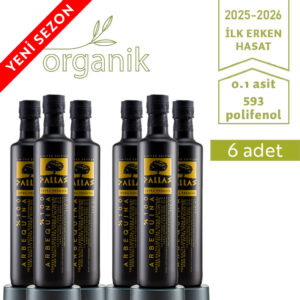What is olive oil acid and why is it important?
Do you know these?
Did you know that the acidity level in olive oil is a very important factor that helps determine the quality of olive oil?
The oil extracted from the fruit of the olive tree is known as olive oil. It is often used in cosmetics, cooking, medicine and soaps. It can also be used as a bread dip or salad dressing. Some people also consume it in small amounts for medicinal purposes.
Most vegetable oils are weakly acidic. Since they are insoluble in water, their pH levels and acidity cannot be measured. It is usually estimated as a percentage of free acidity.
The oil is produced inside the olive fruit, which naturally forms triglycerides. Each triglyceride is a package of three fatty acids bonded by a molecule called glycerol. The link between glycerol and the three fatty acids is weak, so any physical exertion or oxidation will first break and release the three fatty acids. As a result, olive oil begins to deteriorate. Acidity measures how much of these free fatty acids are in olive oil; therefore, acidity is a general indicator of the quality of extra virgin olive oil. The lower the acidity of the extra virgin olive oil, the better the quality of the oil.
It is known that extra virgin olive oils have less than 0.8% free fatty acids and extra virgin olive oils have acidity between 0.8% and 2%.
Does the acidity index affect the flavor?
Most people believe that the higher the acidity of olive oil, the better its flavor. However, this is a very misunderstood concept!
Acidity is mixed with one of the basic tastes: sweet, salty, sour and bitter. Nearly everyone tends to confuse this with the intensity of the oil's flavor, regardless of whether these flavors are pleasant or unpleasant. In reality, they are not related and acidity as a quality parameter cannot be determined by taste. Fatty acids have no taste, and the taste or aroma of the oil is not dependent on acidity.
The basic rule of buying a healthy and nutritious olive oil is to buy an oil with a low acidity level to ensure high quality. In addition, lower acidity also means less damage to the fruit, thus offering healthier qualities.
How does acidity increase in extra virgin olive oils?
The initial acidity level of olive oil is zero. Triglyceride oils are produced naturally in the fruit and fatty acids are released during the production process of olive oil, which increase the acidity level.
The acidity of olive oil increases with exposure to oxidants and aggressive environments. Triglycerides, the main compound of olive oil, are mostly broken down into:
1.- In the form of olives
First of all, triglycerides are protected by the skin of the fruit against oxygen in the atmosphere inside the olive fruit. If the peel is opened, oxygen enters the fruit and begins to break down triglycerides and acidity increases. The shell can open for many reasons: by bites of insects, by hailstorms, by falling to the ground, being crushed during transport, etc. As a result, olive oils from healthy olives are those with low acidity when almost harvested from the tree.
Another delicate step is the storage of olives before they are milled. When the olives reach the mill, they are emptied into metal containers. Olives laid there on the lower part are crushed by the weight of the above. If olives are left in these metal containers for a long time before grinding, the acidity will increase significantly and even the fermentation process can begin. This problem is exacerbated by the fact that olives are softer when ripe and can be crushed more easily.
2. In the grinding and production process
The pulp, which is produced during the production process in the mill, comes into contact with the air and is therefore exposed to oxidation. The longer the grinding process, the more oxidized the pulp of the olive fruit. In this case, too, temperature is important. The higher the temperature, the faster the oxidation reactions and, as a result, the higher the acidity.
3.- During the storage and preservation process
After olive oil is produced and stored in the cellar, the oxidation of the product may continue. If the tank is not completely filled with olive oil, there will be air in the tank. Air is also an important factor that increases acidity.
How to buy the best quality olive oil?
Within the framework of this information, the secrets of purchasing high quality olive oil are as follows:
Read the label carefully:
Check the label for production and use-by dates, and avoid buying bottles that only say "olive oil" as they may contain more fatty acids.
Choose those labeled as extra virgin:
Extra virgin olive oil usually contains the least amount of fatty acids, so it should be the first choice to purchase a high-quality product. Extra virgin olive oils, on the other hand, are the highest quality oils due to their very low acidity.
Avoid buying oil in clear bottles:
Exposing the oil to light causes it to lose its flavor and aroma. Therefore, always buy extra virgin olive oil in opaque tins or dark bottles.
Buy from trusted vendors:
The best way to buy quality olive oil is from a trusted vendor like Pallas.
-

Extra Premium 500 ml En Erken Hasat Filtresiz zeytinyagi
₺950.00 Add to basket -

Extra Premium 500 ml En Erken Hasat Zeytinyagi
₺950.00 Add to basket -

Extra Premium 500 ml x 2 adet zeytinyagi
₺1,800.00 Add to basket -

Extra Premium 500 ml x 6 adet zeytinyagi
₺5,300.00 Add to basket -

Premium 500 ml x 2 adet zeytinyagi
₺1,000.00 Add to basket

